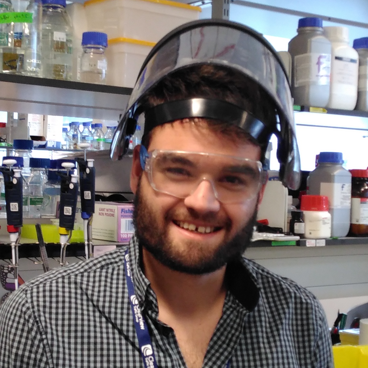Articles
POT-3 preferentially binds the terminal DNA-repeat on the telomeric G-overhang
Yu, X., Gray, S. & Ferreira, H., 25 Jan 2023, In: Nucleic Acids Research. 51, 2, p. 610–618 9 p.
Research output: Contribution to journal › Article › peer-review
DNA damage-induced nucleosome depletion enhances homology search independently of local break movement
Cheblal, A., Challa, K., Seeber, A., Shimada, K., Yoshida, H., Ferreira, H. C., Amitai, A. & Gasser, S. M., 15 Oct 2020, In: Molecular Cell. 80
Research output: Contribution to journal › Article › peer-review
The ATP-dependent chromatin remodelling enzyme Uls1 prevents Topoisomerase II poisoning
Swanston, A., Zabrady, K. & Ferreira, H. C., 9 Jul 2019, In: Nucleic Acids Research. 47, 12, p. 6172–6183 12 p.
Research output: Contribution to journal › Article › peer-review
Structure of the chromatin remodelling enzyme Chd1 bound to a ubiquitinylated nucleosome
Sundaramoorthy, R., Hughes, A. L., El-Mkami, H., Norman, D. G., Ferreira, H. & Owen-Hughes, T., 6 Aug 2018, In: eLife. 7, 28 p., e35720.
Research output: Contribution to journal › Article › peer-review
The ATP-dependent chromatin remodelling enzyme Uls1 prevents Topoisomerase II poisoning
Swanston, A., Zabrady, K. & Ferreira, H. C., 2018, In: biorxiv.
Research output: Contribution to journal › Article
The shelterin protein POT-1 anchors Caenorhabditis elegans telomeres through SUN-1 at the nuclear periphery
Ferreira, H. C., Towbin, B. D., Jegou, T. & Gasser, S. M., 9 Dec 2013, In: Journal of Cell Biology. 203, 5, p. 727-735 9 p.
Research output: Contribution to journal › Article › peer-review
Regulating repression: roles for the Sir4 N-terminus in linker DNA protection and stabilization of epigenetic states
Kueng, S., Tsai-Pflugfelder, M., Oppikofer, M., Ferreira, H. C., Roberts, E., Tsai, C., Roloff, T-C., Sack, R. & Gasser, S. M., May 2012, In: PLoS Genetics. 8, 5, 19 p., e1002727.
Research output: Contribution to journal › Article › peer-review
The PIAS homologue Siz2 regulates perinuclear telomere position and telomerase activity in budding yeast
Ferreira, H. C., Luke, B., Schober, H., Kalck, V., Lingner, J. & Gasser, S. M., Jul 2011, In: Nature Cell Biology. 13, 7, p. 867-874
Research output: Contribution to journal › Article › peer-review
Yeast telomerase and the SUN domain protein Mps3 anchor telomeres and repress subtelomeric recombination
Schober, H., Ferreira, H. C., Kalck, R., Gehlen, L. R. & Gasser, S. M., 15 Apr 2009, In: Genes & Development. 23, 8, p. 928-938 11 p.
Research output: Contribution to journal › Article › peer-review
MacroH2A Allows ATP-Dependent Chromatin Remodeling by SWI/SNF and ACF Complexes but Specifically Reduces Recruitment of SWI/SNF
Chang, E. Y., Ferreira, H., Somers, J., Nusinow, D. A., Owen-Hughes, T. & Narlikar, G. J., 23 Dec 2008, In: Biochemistry. 47, 51, p. 13726-13732 7 p.
Research output: Contribution to journal › Article › peer-review




